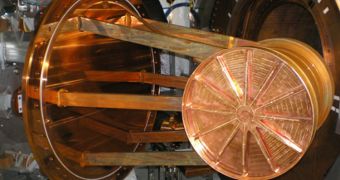An international collaboration of researchers has just placed the most precise set of restraints on the nature of neutrinoless double beta decay, a form of atomic decay that can be used to establish the mass of neutrinos with great precision. In turn, this could be used to unlock the mysteries of the Universe.
Neutrinos are extremely small, non-zero-mass, electrically-neutral particles that pass through everything without interacting all that much. Since physicists first detected the particle, only several instances were confirmed over the decades.
For years, scientists have proposed the existence of a hypothetical and rare process involving the radioactive decay of atomic nuclei, but they were thus far unable to study it due to measurement limitations.
This was finally made possible through the use of the Enriched Xenon Observatory (EXO-200). Experts at the California Institute of Technology (Caltech), the Stanford University and the SLAC National Accelerator Laboratory worked together on this investigation.
The sensitive measurements the group obtained are the most precise collected over the past ten years, and hold great promise for finally allowing this line of research to advance. A deeper understanding of the laws of the Universe is within our grasp.
In a paper to be published in an upcoming issue of the esteemed scientific journal Physical Review Letters, the 80-strong team of experts behind this study suggests that the new data could eventually be used to determine why more matter than antimatter exists in the Universe.
A normal beta decay process, the group says, occurs when two neutrons turn into two protons inside the unstable nucleus of an atom. The process releases two electrons and two antineutrinos. However, it was hypothesized a while back that the process could occur without the release of antineutrinos.
“People have been looking for this process for a very long time. It would be a very fundamental discovery if someone actually observes it,” EXO-200 team member and Caltech senior research associate in physics, emeritus, Petr Vogel, explains.
Since a single beta decay always produces a neutrino, it stands to reason that a double beta decay should produce two. But this implies that one of the neutrinos needs to act as the antiparticle for the other neutrino, a behavior that is not predicted by the Standard Model.
Therefore, if the neutrinoless double beta decay is discovered, the Standard Model would be proven to be in error, something that has not been demonstrated for at least 40 years. The implications would force us to reconsider most of the things we now about the particle world.

 14 DAY TRIAL //
14 DAY TRIAL //